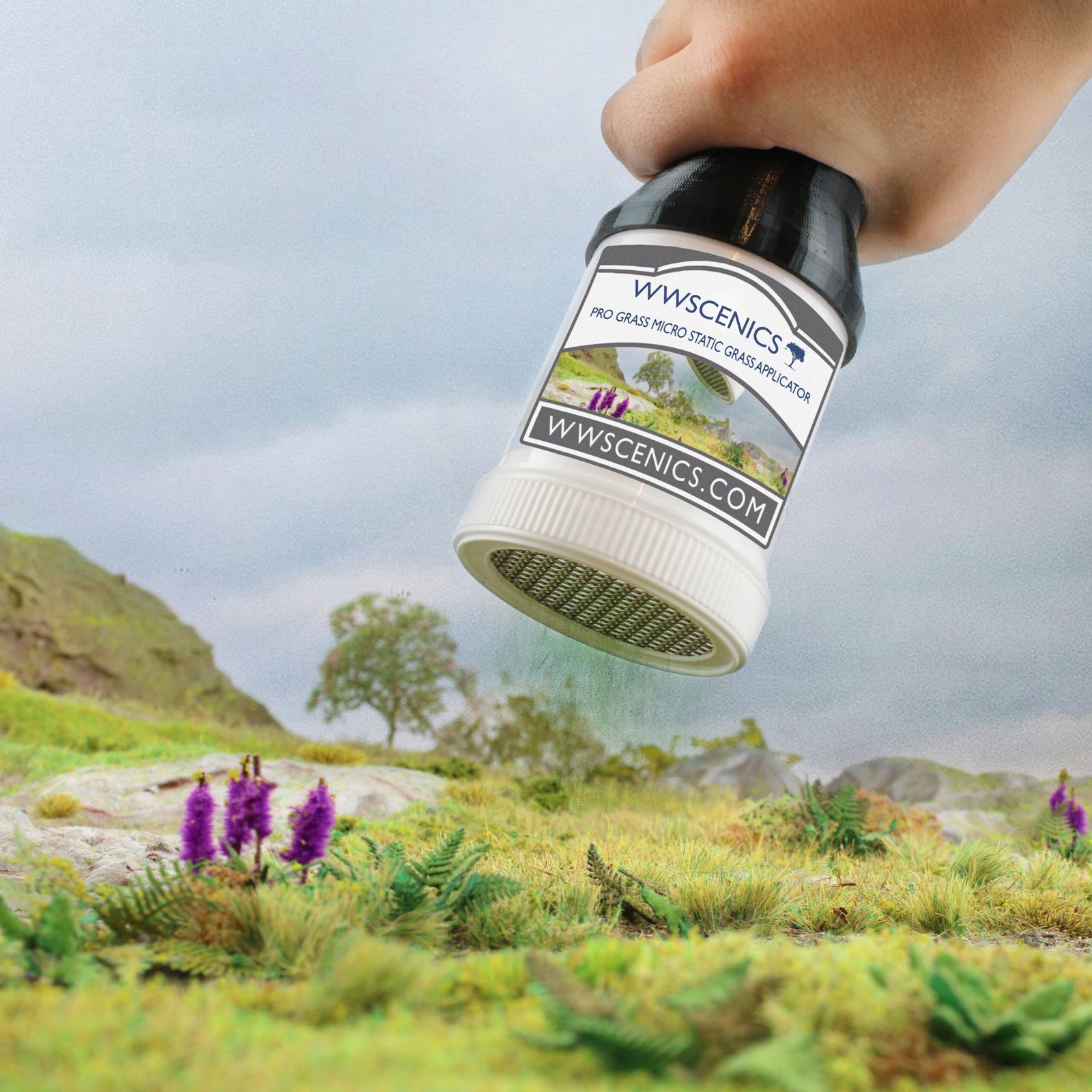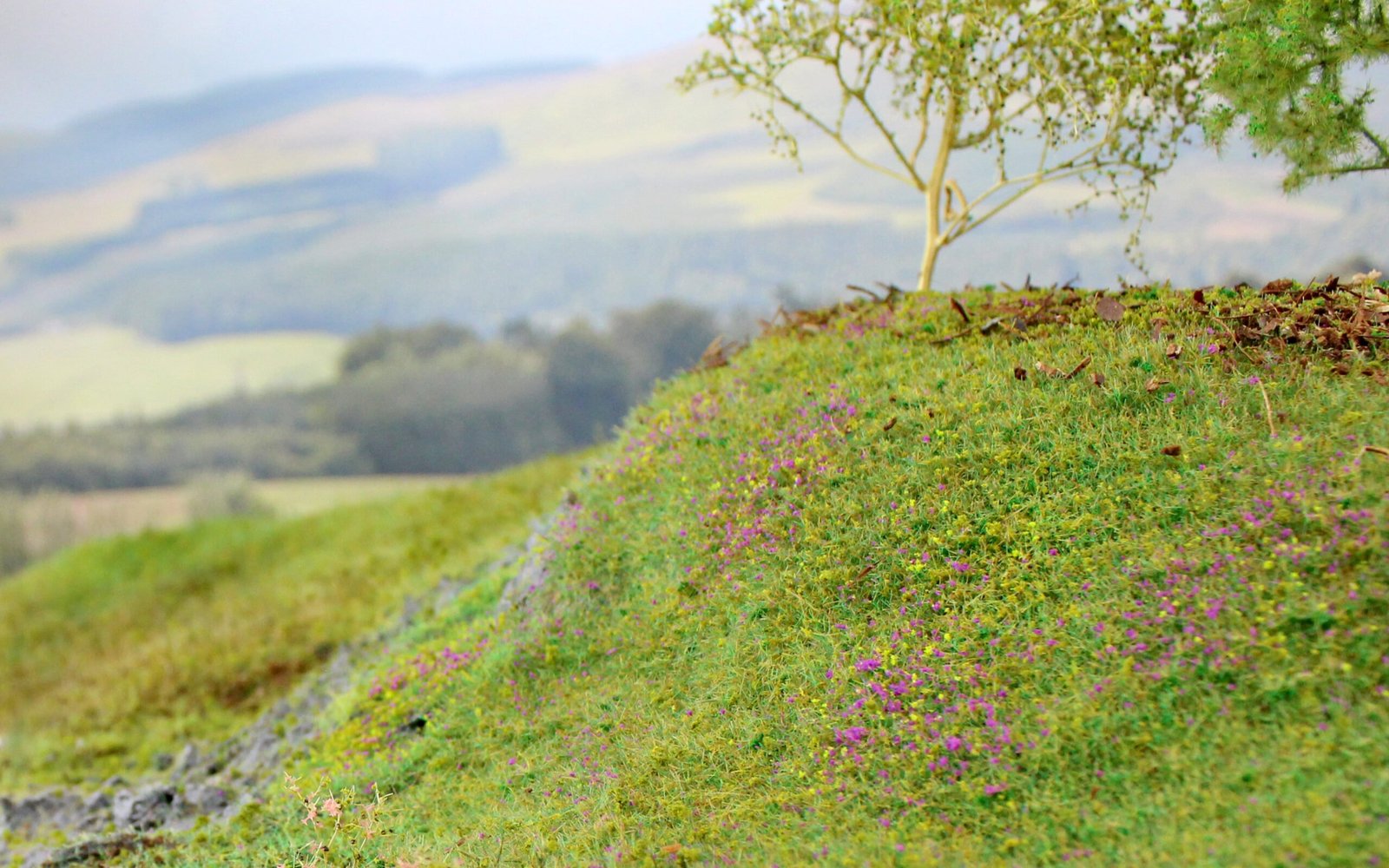![]()
We Ship Worldwide with Free UK Shipping on orders £60+ with Standard Delivery
![]()

Different types of static grass
With the invention of static grass revolutionising the way we create models and hyper-realistic scenery, many model makers are looking to start using static grass for themselves. As static grass is still a fairly new invention, you might be wondering what each of our different grasses does, and how they work together to create these impossibly realistic grassy landscapes.
There are two types of static grass you will need to create your scenery: basing grass and layering grass. We have outlined each type of static grass below, and how you can use them to their fullest potential.

Basing Grass
Our basing grass is, as the name suggests, the base layer of grass you will use to build your landscape on top of. By creating a realistic base of grass to use as a foundation, you can create all sorts of grassy landscapes from meadows to snowy fields and scorched desert landscapes using our large variety of different colours and types of basing grass. We offer 1mm basing grass, as well as 2mm basing grass, so you can find the perfect scale for your model.
You will see that our basing grass is a bolder colour than our layering grass. The reason for this is that if both basing grass and layering grass were all the same colour, they would all blend into each other, plus the bold colour will still come through, to give you great depth. We always strive for realism, and by creating different colours, you will achieve the depth, realism, and texture of real grass in minutes.
Layering Grass
Layering grass is the secret to creating realistic landscapes. When you look outside, you’ll notice that grass in wild meadows or fields is not all the same length or colour. By using different lengths of grass and different colours you can create depth and achieve a level of realism you didn’t know was possible. We sell six lengths of grass, each designed to help you achieve a hyper-realistic finish. You can use your longer grasses in the background, further away from the focal point of your landscape to create the illusion of depth or mix your grass lengths to create a wild and overgrown meadow.
Layering grass – scale vs gauge
It is important to bear in mind the size of your model as it will determine the size of the layering grass you should be using – if you are building using an N gauge, you’ll want to keep taller grass such as 4mm far away from your loco, buildings or anything used to determine scale in real life because the taller grass will dwarf your layout.
A good rule of thumb is as follows:
N gauge and TT gauge should use 1mm, 2mm and 4mm grass, making sure to keep the grass away from the track, locos, or buildings.
OO gauge should use 2mm, 4mm, and 6mm, with some 10mm grass in the wild, out-of-the-way areas or further away in the distance to be used as the unkempt grassy landscape.
O gauge should use 2mm and 4mm to get to a good working height, then bring in the lengths and colours to achieve the desired look. You can also use 6mm, 10mm and even 12mm to create that scruffy wild look down sidings or disused areas.
Of course, you can use whatever length of grass you prefer, but these are just good to keep in mind if you are going for optimum realism. The beauty of modelling is that you can create whatever you like, and don’t have to follow rules at all if you don’t want to.
Questions?
If you still have questions about our revolutionary static grass, our Pro Grass Layering System, or any of our modelling glues, please refer to the appropriate informational blog posts. If you still have questions don’t hesitate to get in touch and one of our friendly team of experts will be able to assist you and help you get on your way. Happy modelling!
Sign up to scenery news
Bringing You the latest News from the WWScenics Community: New Releases, Tutorials, Tips & Tricks to improve your modelling, Upcoming Events, Exclusive Offers, and so much more!
